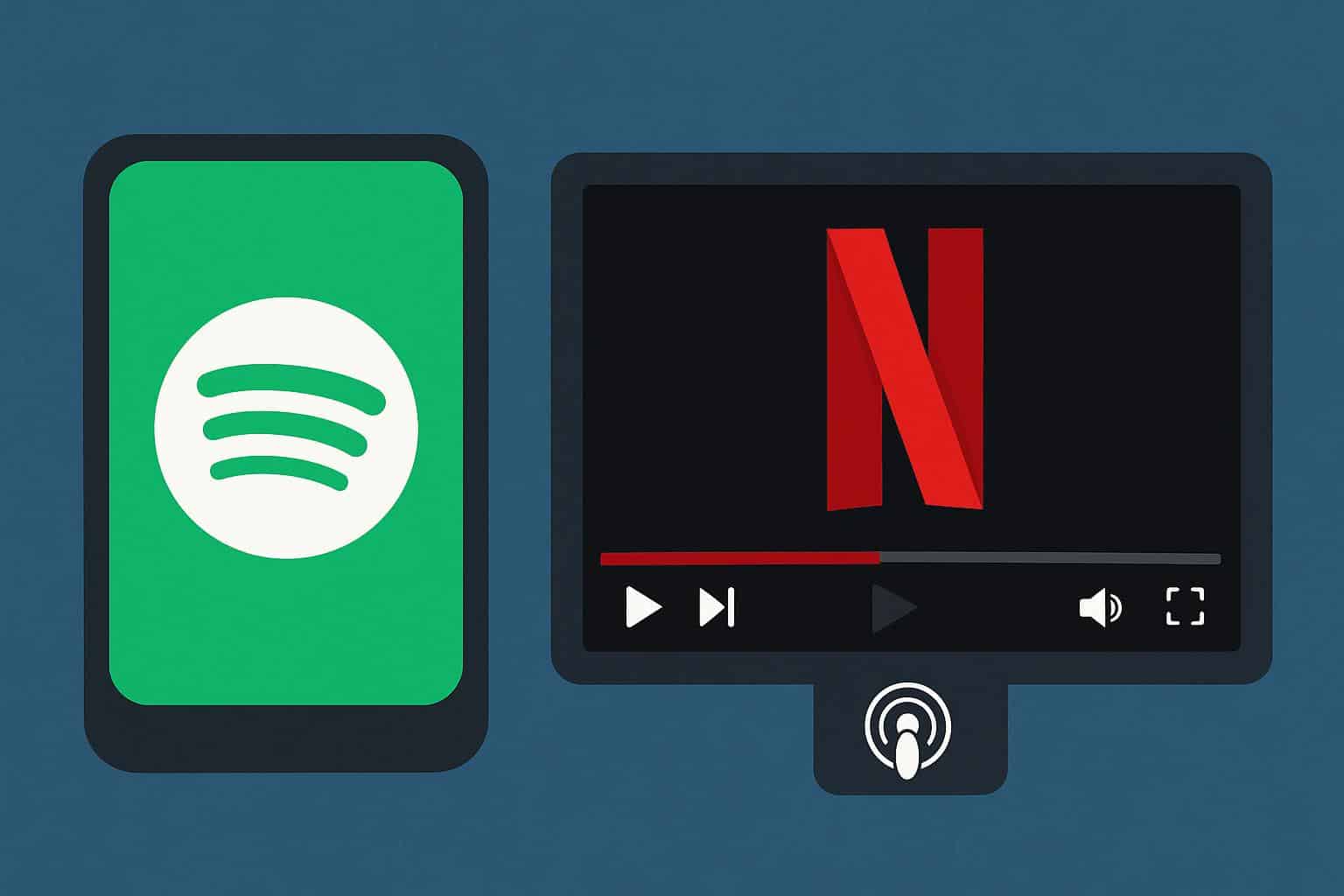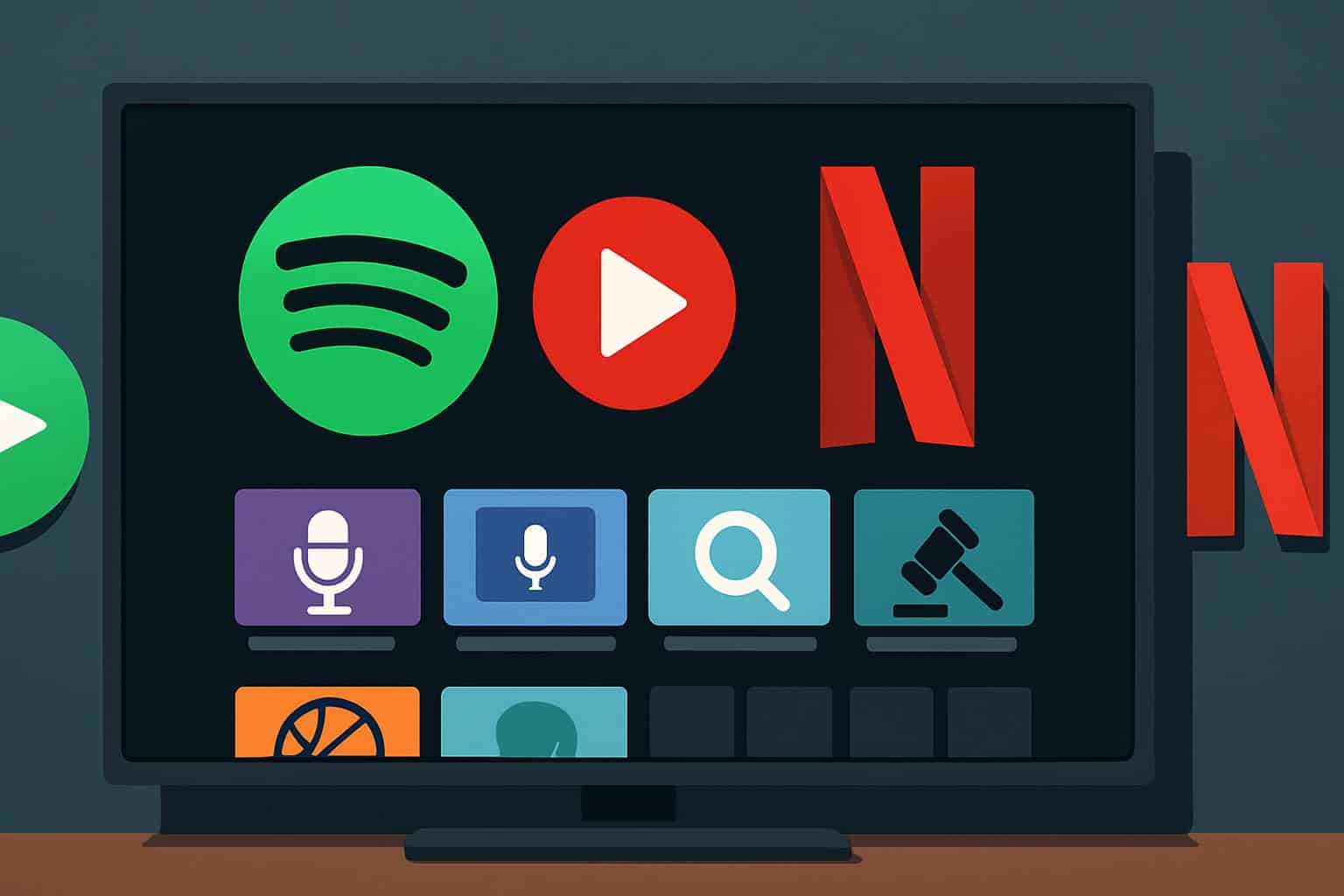Spotify will deliver a selection of curated video podcasts to Netflix in the form of a new distribution channel, transforming the streaming giant into another screen for programs that had been developing an audience inside its own app. It will launch with select series from Spotify Studios and The Ringer covering sports, culture, lifestyle and true crime as part of a rollout in the U.S., then other markets.
The companies are pitching the tie-up as a discovery play for podcast creators, and as a means to broaden fan access from within their respective walled gardens of individual apps. Financial terms and ad-sharing details were not announced, but both sides are indicating a desire for greater reach and new monetization possibilities.

What the partnership includes for launch and beyond
At launch, Netflix viewers will find a selection of curated video podcasts developed by Spotify’s in-house teams, as well as brands like The Ringer. Expect a highly programmed catalog to begin — talent-led talk formats and documentary-style series that work for lean-back streaming, say — with more studios and genres added over time.
By doing so, Spotify is essentially syndicating its video inventory onto a massive connected-TV stage. It’s not a replacement for Spotify’s own in-app experiences where things like Q&A, polls, and comments exist today; instead, it’s about expanding distribution to those who watch long-form content on TVs or use a tablet as their main source of entertainment.
Neither company is revealing whether episodes of the series will debut simultaneously across platforms or if they’ll follow a traditional windowing schedule. Industry watchers will be seeking clarity on the release schedule, what happens with back catalogs and whether creator-branded channels or themed collections show up within Netflix’s interface.
Why it matters for both companies and their audiences
Spotify has been pushing into video as a growth vector for podcasts after a previous wave of audio-first investments produced mixed financial returns. It now has hosted more than 430,000 video podcasts, the company says, with video listening growing at a clip roughly 20 times faster than audio-only. The company said more than 350 million users have streamed a video on the service, which, it added, grew over 60% year over year.
For Netflix, the addition of a slate of branded video podcasts helps fill daytime and second-screen viewing windows with inexpensive, personality-driven material. It also broadens the service’s slate of programming with formats that play well on connected TVs but don’t require the production budgets of scripted originals.
Strategically, both businesses succeed by reaching young consumers where they already spend time: on screens small and brief as well as large and lasting. Indeed, Edison Research has consistently reported that YouTube is the top source of podcast discovery and weekly podcast listening among U.S. consumers, particularly for video-centric shows. Bringing Spotify’s catalog into Netflix provides both companies with a counterswing against that gravitational pull.

The advertising and measurement angle for this deal
Podcast advertising continues to be a relatively small slice of digital media, but is growing quickly. The IAB says U.S. podcast ad revenue reached upwards of $2.2 billion in sales recently, driven by host-read ads, brand lift and performance-based campaigns with measurable returns. Combine that demand with connected-TV inventory, and cross-screen packages, sequential storytelling and new shoppable ad formats offer promise.
Netflix has amassed a large ad-supported audience and has been rolling out tools to make its ad offering more competitive with television, which is typically financed by both advertising and subscriptions. If the partners allow for unified targeting and reporting — such as by linking Spotify’s first-party listening signals to Netflix’s household-level scale — brands could purchase podcast talent, context and TV-like scale in one plan. Specifics around measurement partners — Nielsen, Kantar or first-party panels — will be important.
Implications for creators, monetization, and reach
For podcasters, the pitch is simple: more screens, more discovery and, potentially, more revenue. Shows that are video-first with a strong visual identity — sports breakdowns, true-crime explainers, comedy desks — have the most to gain from living next door to Netflix’s talk, doc and stand-up lineups.
One issue remains unresolved: how does interactivity travel? Spotify’s native features, including polls and comments, have been useful in engagement and retention, but those still don’t exist on Netflix as of today. They’ll also want clarity around how analytics flow back, how ads are inserted, and whether they can window exclusive segments or bonus cuts to reward their subscription supporters or drive an upsell.
What to watch next as the rollout and tests unfold
Anticipate different testing of viewing habits on a few strong-signal franchises first and then genre widening and international spend.
Watch to see if the two run similar programs together for branded collections, live specials or co-marketing around a tentpole cultural moment (e.g., a huge sports event, awards season).
The bigger story is this: video podcasts are turning into programming, not just feeds. By embedding them within one of the world’s biggest streaming platforms, Spotify and Netflix are betting that what may be the next rush of growth in podcasting will resemble television a whole lot — and that creators and advertisers will follow the audience there.

